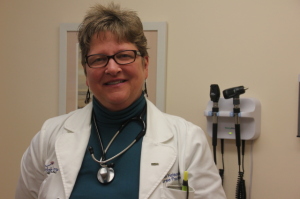by
Lauren Dubinsky, Senior Reporter | January 29, 2015

Diann Nelson-Houser,
immediate past president of OAAPN
Removing the scope-of-practice laws among Ohio's advanced practice registered nurses (APRNs) may increase access to health care and reduce emergency department visits by 70,000, according to a new RAND Health study commissioned by the Ohio Association of Advanced Practice Nurses (OAAPN).
APRNs in Ohio are only permitted to diagnose patients, treat illnesses, order and interpret tests and prescribe medication if they have a collaboration agreement with a physician. However, getting those collaboration agreements is getting harder.
"That's part of the big problem and that's one of the reasons we commissioned the study," Diann Nelson-Houser, immediate past president of OAAPN, told DOTmed News. "We wanted to evaluate if there are benefits to the state and patients of having full practice authority for APRNs."




Ad Statistics
Times Displayed: 33477
Times Visited: 897 Stay up to date with the latest training to fix, troubleshoot, and maintain your critical care devices. GE HealthCare offers multiple training formats to empower teams and expand knowledge, saving you time and money
There will be a shortage of 90,000 physicians in the U.S. and almost one-third of existing physicians will retire in the next 10 years, according to the Association of American Medical Colleges. On top of that, medical students are increasingly choosing not to enroll in primary care and the health care system is bearing the brunt of the aging population and an influx of newly insured patients.
"It's going to get dire but I think if we can paint that picture and show people how it's really going to be and allow states to be savvy and proactive in solving this problem before it even comes to a head, then those states are going to be better off," said Nelson-Houser.
RAND researchers performed a literature review by analyzing peer-reviewed studies in PubMed and Cumulative Index to Nursing and Allied Health Literature databases. They also used the Google search engine to compile gray literature on nursing and state SOP laws and review nurse association websites for documents on Ohio SOP laws.
They found that 1.5 million Ohio residents would report better access to care and also that a year or two after removing the laws, about 330,000 additional residents could receive primary care visits. The nurse practitioners and other APRNs could also have more patient care hours.
The study didn't investigate the financial impact of removing the SOP laws but OAAPN estimates that the cost saving could be in the millions based on Medicaid and Medicare fee schedules and the cost of ED and primary care visits.
Giving APRNs full-practice authority is a growing trend in the U.S. and now over a third of the states and the District of Columbia permit it. OAAPN is currently drafting legislation and hopes to introduce it during the coming General Assembly, which will be within the next quarter.
Nelson-Houser would have said it will take a long time to get the laws removed a year ago. But now she thinks it will happen in the near future since it's a national trend. "It's absolutely needed. The physician population is not growing at a rate commensurate with the patient care population so we need all hands on deck and I think that the legislatures are going to see that," she said.

